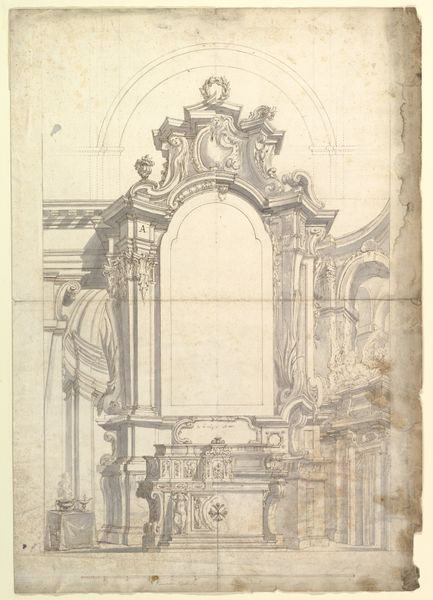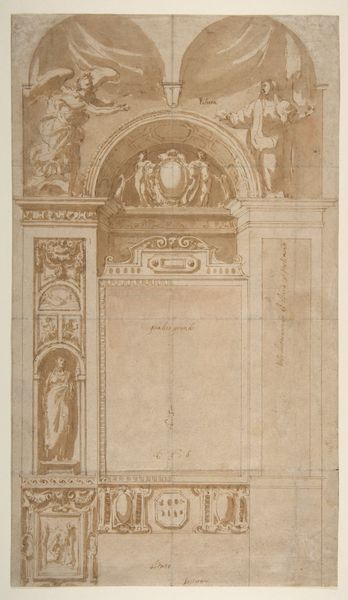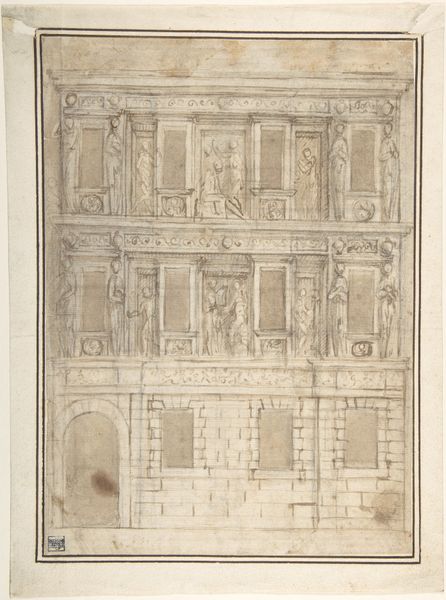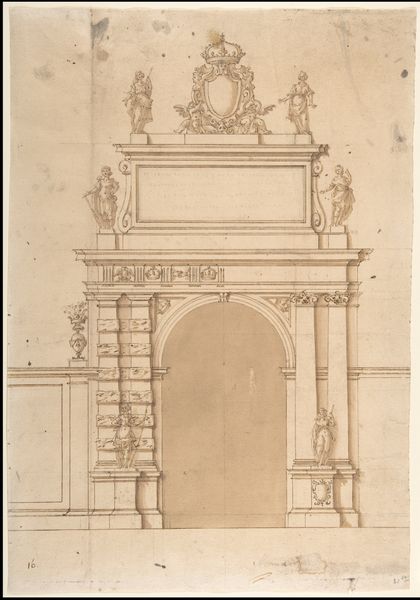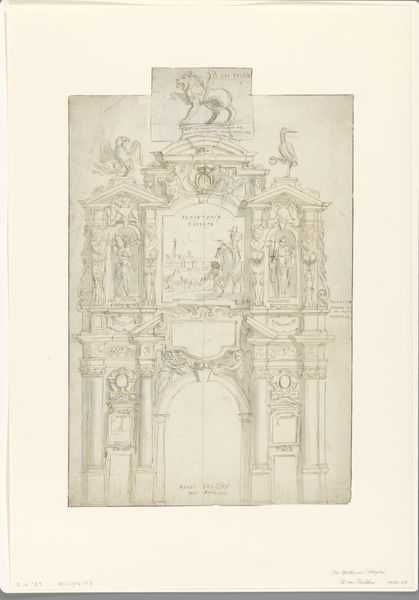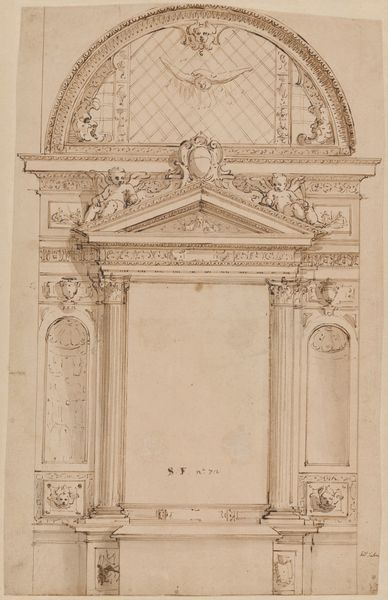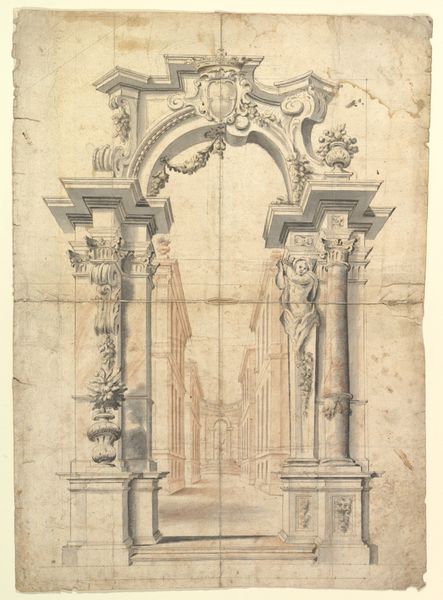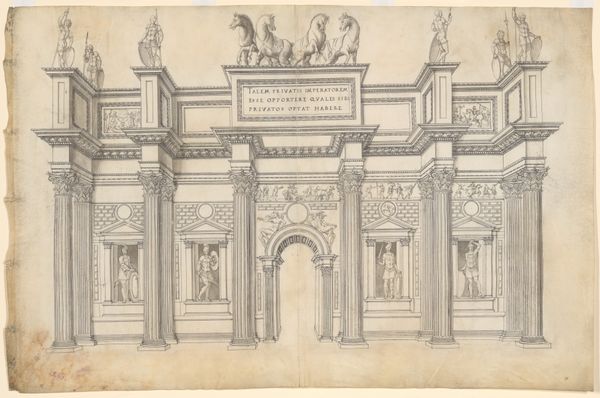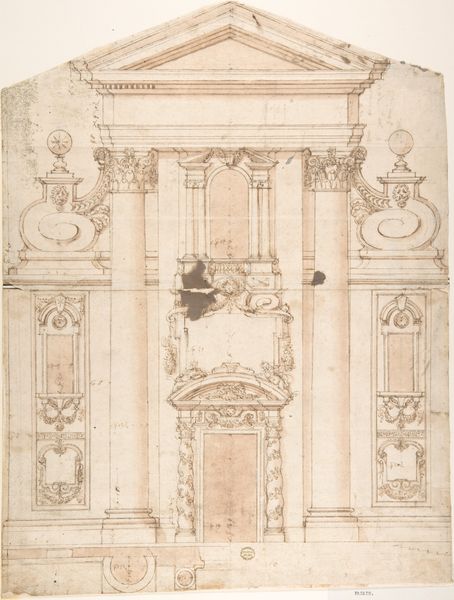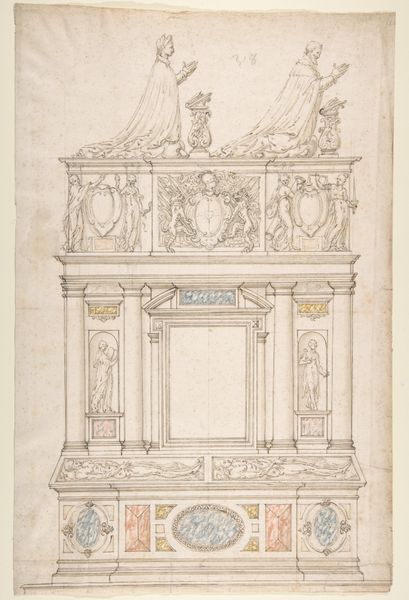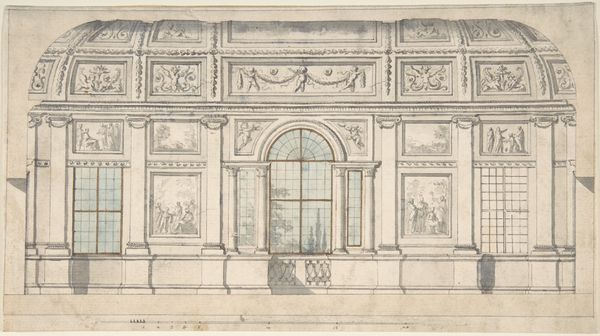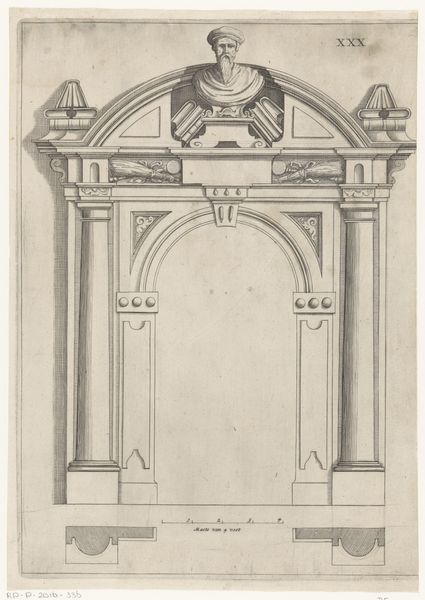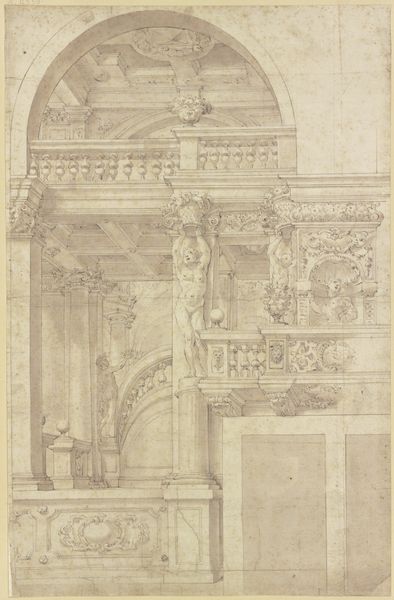
drawing, print, etching, architecture
#
drawing
# print
#
etching
#
etching
#
geometric
#
line
#
history-painting
#
italian-renaissance
#
architecture
Dimensions: 11 15/16 x 10 1/16in. (30.3 x 25.5cm)
Copyright: Public Domain
Curator: This etching offers a look at the Arch of Constantine in Rome. The artist, Bartolomeo Neroni, also known as Il Riccio, rendered it sometime between 1500 and 1571. Editor: It’s immediately striking, this skeletal rendering. The bare lines almost feel contemporary, even though the subject matter is ancient. There is something powerful about its sparseness. Curator: Neroni, deeply influenced by the Italian Renaissance, was drawn to the clean, rational lines of classical architecture. Note how he meticulously depicts the inscriptions, the reliefs. The act of printing these depictions served a growing market for historical souvenirs and educational resources. Editor: It raises questions of power and legacy. Why reproduce this arch in print? What does it signify when filtered through the lens of the Renaissance? We have a Roman structure viewed by a Renaissance artist and disseminated through the reproducible medium of etching. Curator: Exactly. The materials and methods reveal an economy of cultural capital. Printmaking made accessible what had previously been confined to physical travel, democratizing the viewing experience, and circulating interpretations. Editor: And this dissemination speaks to the construction of European identity, referencing classical antiquity as foundational, even idealized. Constantine, remember, shifted the Roman Empire toward Christianity. Curator: That transition is, pointedly, literally inscribed onto the very stone itself here, carefully translated by the artist, becoming a potent visual claim. It brings up the historical context surrounding religious reformation. What might a new construction mean? Editor: It is worth asking whose history and whose triumph is etched in this particular image, one so often repeated, in ways that affirm very particular cultural values. The piece reveals more than just architectural details; it uncovers historical processes. Curator: In closing, observing this print, we can gain a fuller, much deeper understanding of the processes that allowed antiquity's presence in the early modern world. Editor: Yes, the visual austerity draws me in to consider whose history has been given voice and how those choices affect our world even now.
Comments
No comments
Be the first to comment and join the conversation on the ultimate creative platform.

